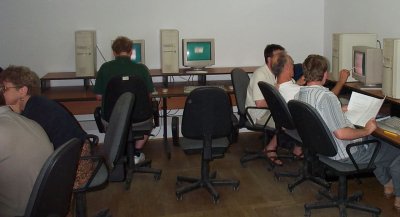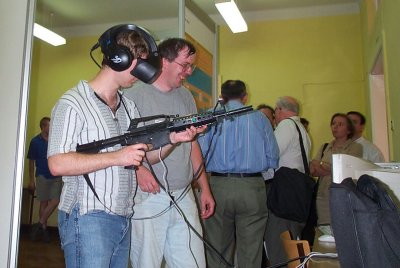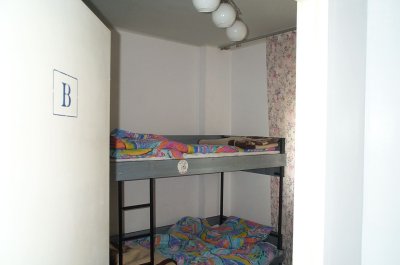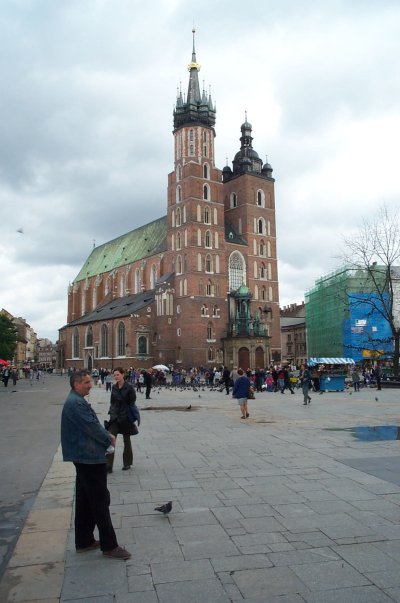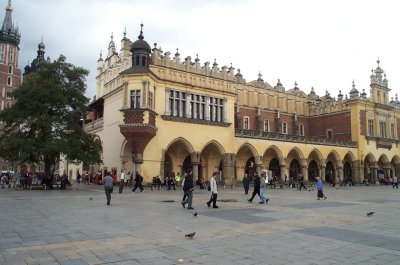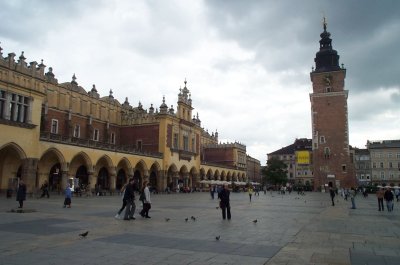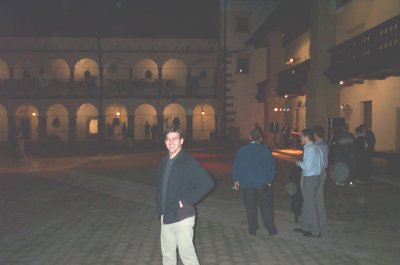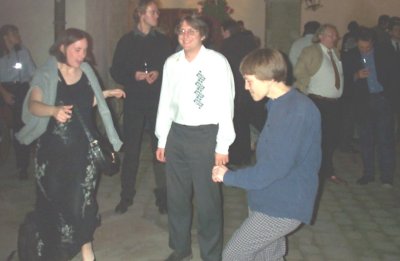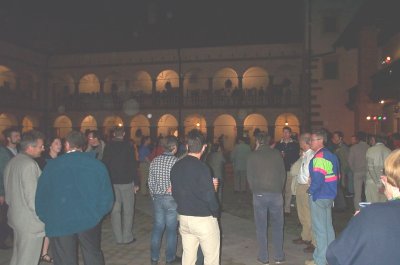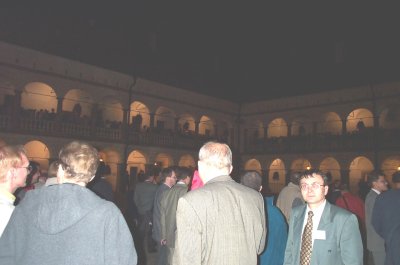The 20th European Crystallography Meeting was held in Krakow in August 2001. Those attending from the
Chemical Crystallography Laboratory in Oxford were:
Professor Keith Prout and Dr Richard Cooper.
|
Wieliczka is about 10km out of Krakow. It is Europe's oldest working
salt mine and is now over 700 years old. Here is a statue of the
great Polish astronomer Nicolaus Copernicus.
|
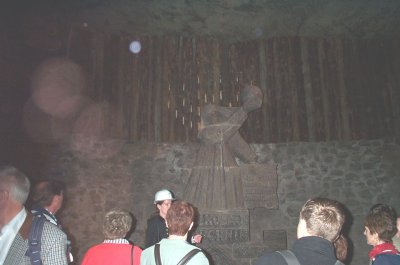
|
|
St. Anthony's Chapel (65m below ground) is the oldest surviving
underground chapel dating from the 17th century. The miner's used to pray
here that they would find some nice salt.
|
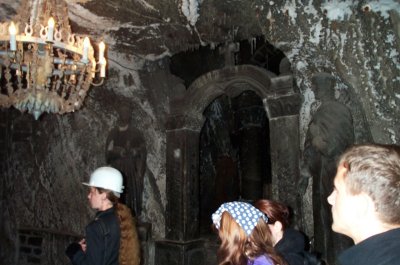
|
|
The pulpit, made of Salt, and a statue of St. Peter.
|
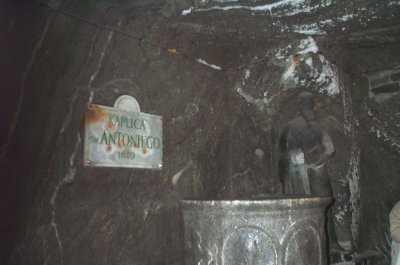
|
|
A salt chandelier. The giant salt crystals are from a nearby salt cave.
|
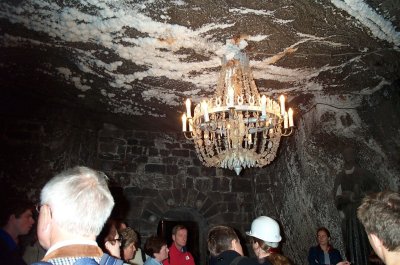
|
|
Some salt statues tell the story of the legend of Kinga's ring. According
to the legend, princess Kinga, before
marrying the Polish king, threw her engagement ring into a shaft of
the Maramures salt mine, and the ring travelled miraculously with the salt
rock deposit to Wieliczka. Miners drilling a shaft in the place indicated
by the princess found salt. The princess's engagement ring was found in the
first block of salt delved out. Since then Kinga has been considered patron
of salt miners. |
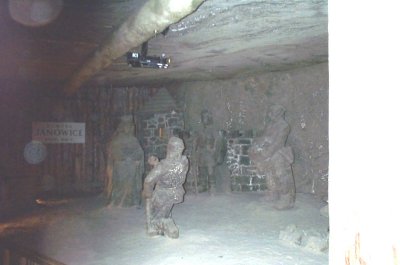
|
|
Casimir the Great, a Polish king who introduced laws to regulate mining,
employment, and salt trade in 1368.
|
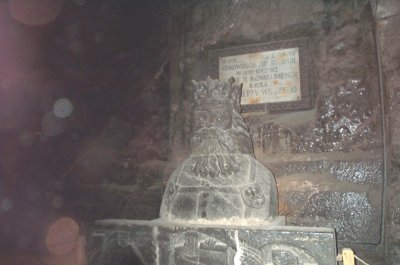
|
|
This strange little salt dwarf is said to grant a couple of wishes. If you
kiss his beard you will get married; if you kiss his bottom, then you
will get divorced. Ugh. Salty.
|

|
|
This is just a long tunnel with some water running down one side of it.
There are over 300km of tunnels in the mine, so it's not wise to go
wandering off from the tour.
|
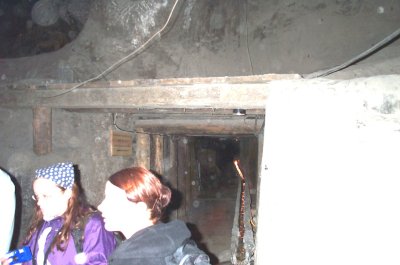
|
|
A huge underground chapel dedicated to the "Blessed Kinga", the
life-work Jozef and Tomasz Markowski and Antoni Wyrodek.
|
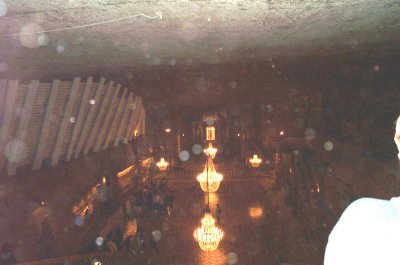
|
|
Another view from the top of the chapel. The chandeliers are made
of ... wait for it ... salt.
|
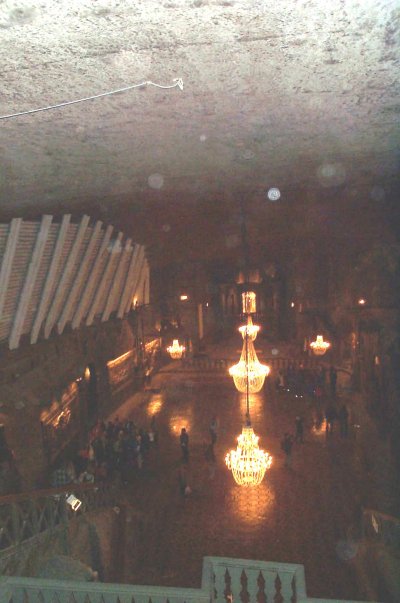
|
|
A view as we descend into the chapel down some stairs. They were probably
made of salt.
|
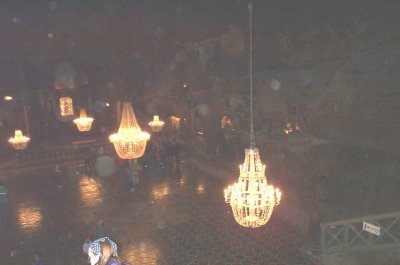
|
|
A view of our tour party and the salty stairs that we just descended.
|
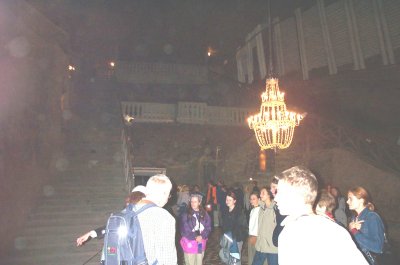
|
|
A salt carving of God (made from very pure transparent salt). A
salt statue of the virgin
Mary can be seen through the archway in the background.
|
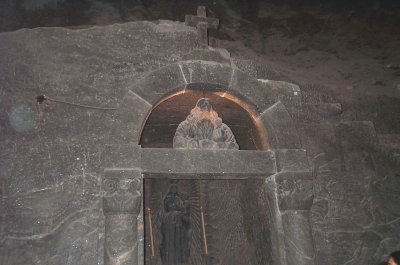
|
|
An underground salt lake (approx 9 metres deep). Imagine how salty that's
going to be.
|
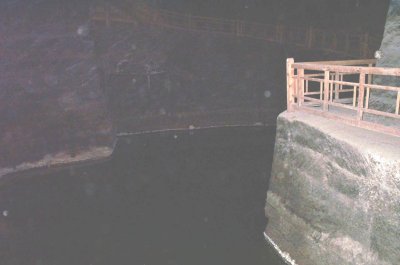
|
|
One hundred metres below ground we stumble across a miner's band. They
are 147 years old, but look quite well for it.
|
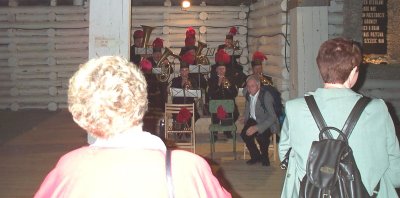
|
|
Difficult to see this one. It's a statue of a friendly salt mine ghost
(made of salt), on the opposite side of another salt lake. This lake
isn't so deep this time, only about one-metre.
|
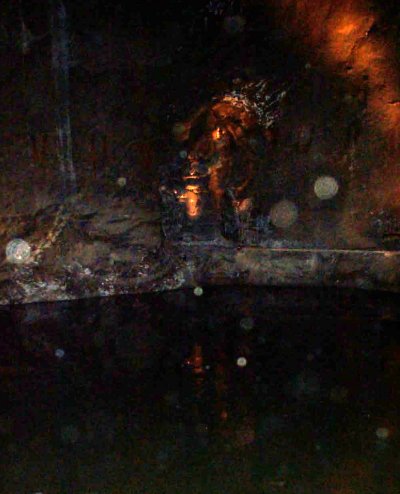
|
|
Looking up above the lake at some old stairs to the level above.
|
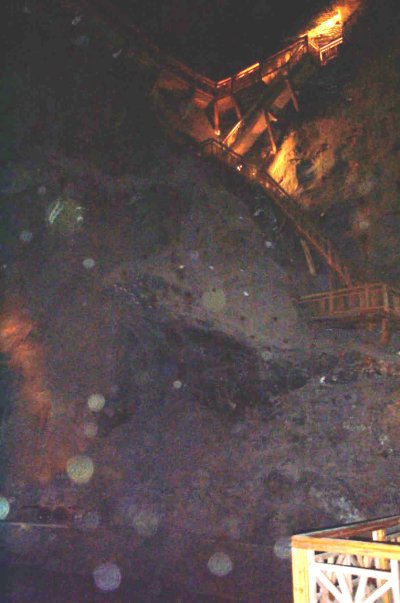
|
|
A view up one of the tallest underground caverns. This one is 36m
high and was recently the site of the world's first underground hot-air
balloon flight.
|
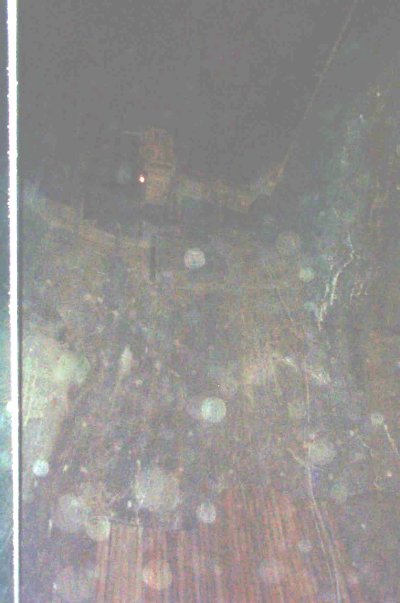
|
